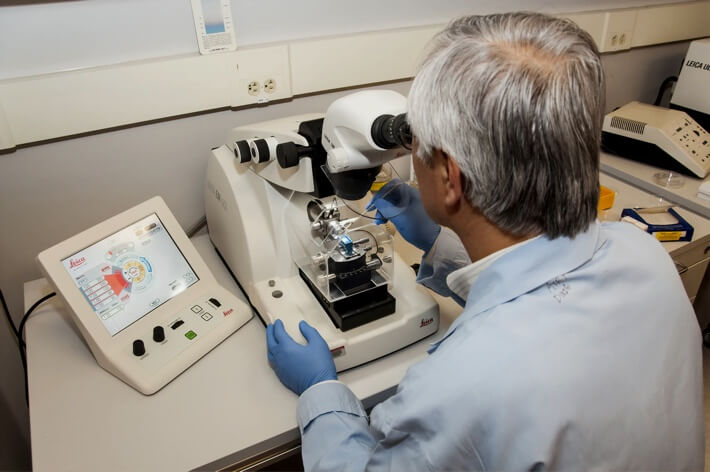
Attenuated Total Reflectance (ATR)
$99 Base price View My Quote RequestInductively Coupled Plasma Mass Spectroscopy (ICP-MS)

Inductively Coupled Plasma Mass Spectroscopy (ICP-MS) is a destructive chemical analysis technique which measures the elemental composition of a sample. It is one of the most sensitive multiple-element analysis methods, with detection limits down to ng/L.
- Extremely high elemental sensitivity: limit on the order of parts-per-trillion
- Can detect most elements in the periodic table with a single experiment
- Accepts a wide array of sample types (solution or solid, inorganic or organic, simple composition to complex mixtures)
- Rapid analysis
- Isotope detection
- Quantitative analysis requires parallel measurement on reference / control sample
- Does not easily capture molecular / compound information
- Destructive
- Sample preparation such as sample digestion via acid can be time-consuming
- Limited total dissolved solids (TDS) tolerance
Technical Specifications:
Learn More:

High resolution mass spectrum captured on a 1 ppb tune solution in the mass range 105 to 155 amu
From: Thermo Fisher Scientific Technical Note
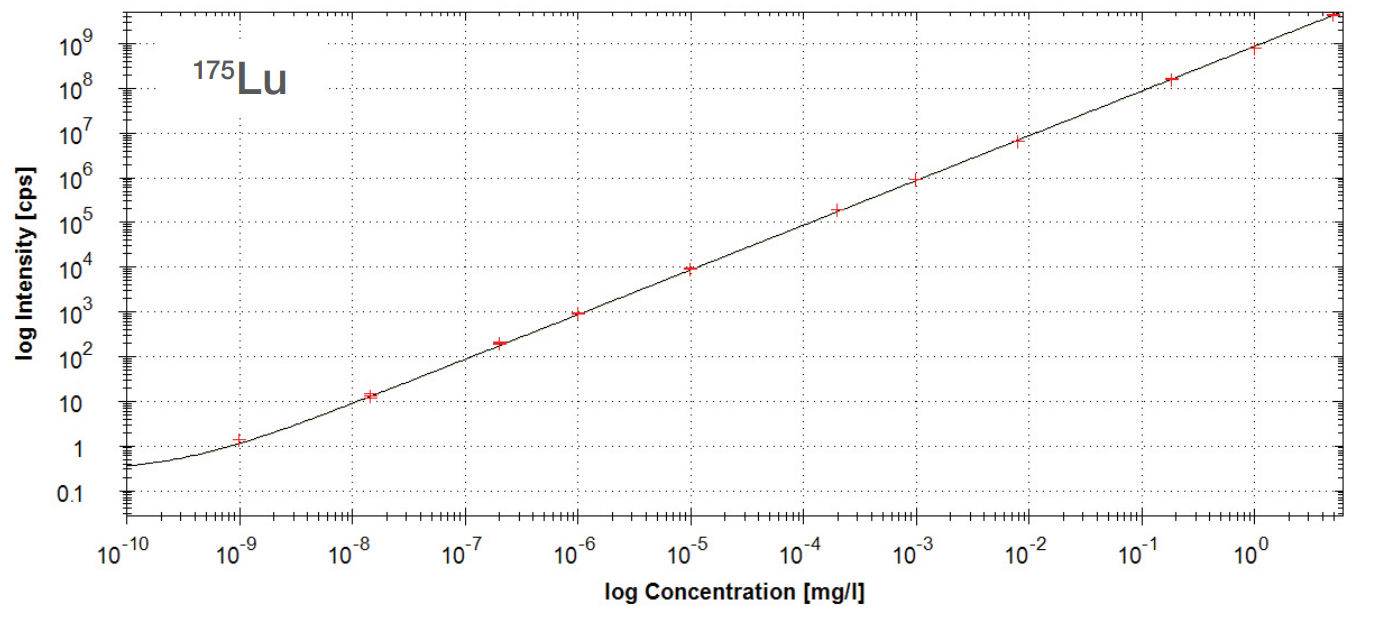
Calibration curve generated for 175Lu quantification in a standard / control sample. The plot shown is in log scale from 1pg∙L-1 to 5 mg∙L-1. The background of the blank was <0.3 cps, with over 10 orders of magnitude dynamic calibration range to 5 mg∙L-1 at 8.57 Gcps with an excellent correlation coefficient of R2=1.000
From: Thermo Fisher Scientific Technical Note
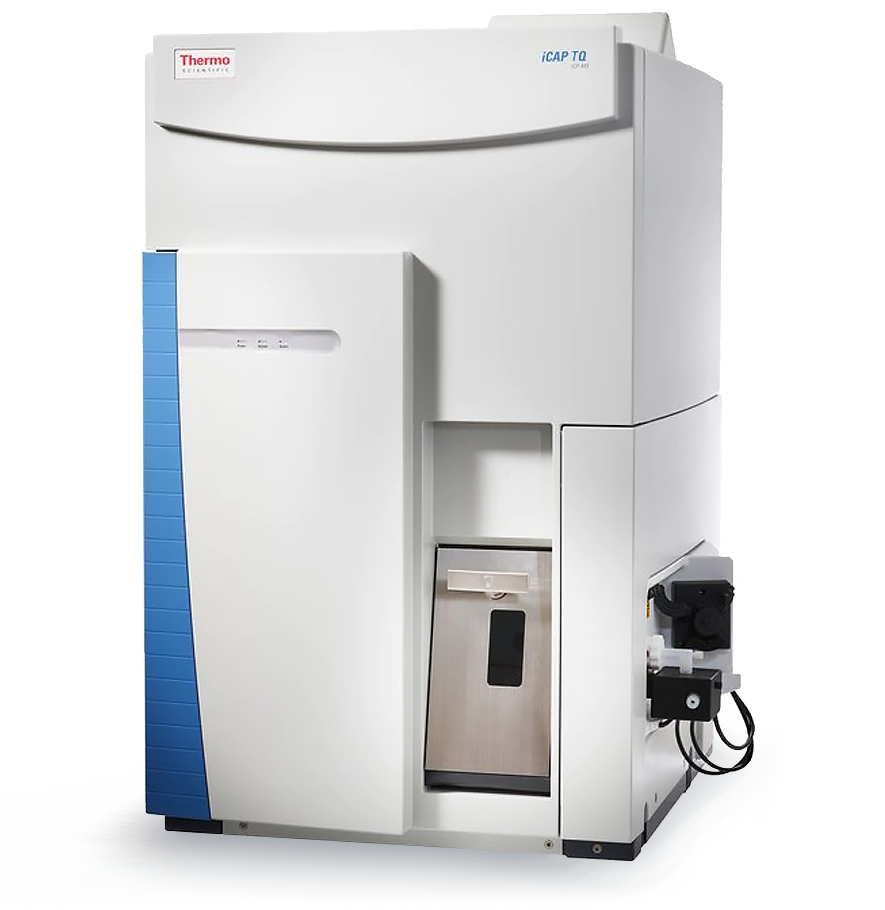
Thermo Scientific iCAP Triple-Quad (TQ) ICP-MS
- Detection Limits vary by atomic species: as low as < 0.5 (ng/L)b (for 9Be)
- Abundance Sensitivity: < 0.005 ppm
- Minimum Dwell Time: 100 μs in pulse and analog
- Dynamic Range: more than 10 orders of magnitude
- Stability: below 2.0 %RSD over 10 minutes
- Isotopic Ratio Precision: below 0.1 %RSD
- Nebulizer: Concentric glass
- Nebulizer Default Flow Rate: 400 uL/min (pumped)
- View Instrument Spec Sheet
In a standard ICP-MS, an inert gas (argon) is inductively heated via current through a surrounding electromagnetic coil to form a plasma.
The sample (typically in liquid form) is inserted, aerosolized, and digested in the plasma into ion fragments, which are accelerated through a quadrupole mass analyzer to yield a mass spectrum.
Peaks in this spectrum correspond to the elemental ions present in the original sample, yielding quantitative and semi-quantitative elemental composition information.
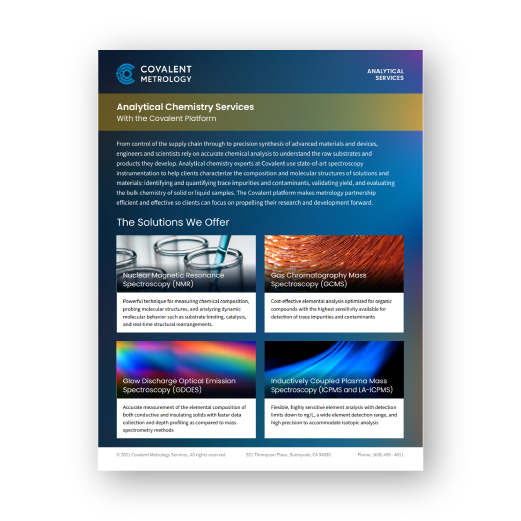
Analytical Chemistry Services
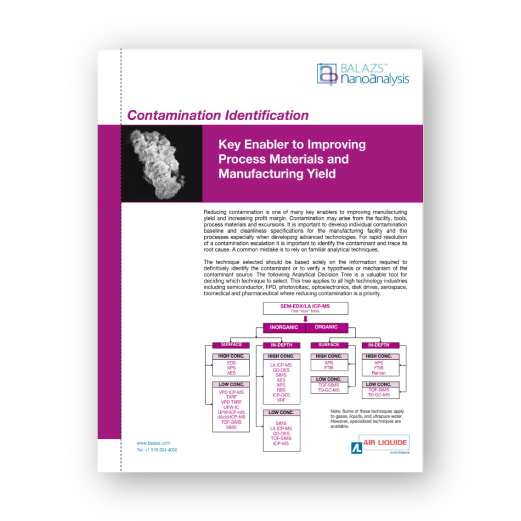
Contamination Identification
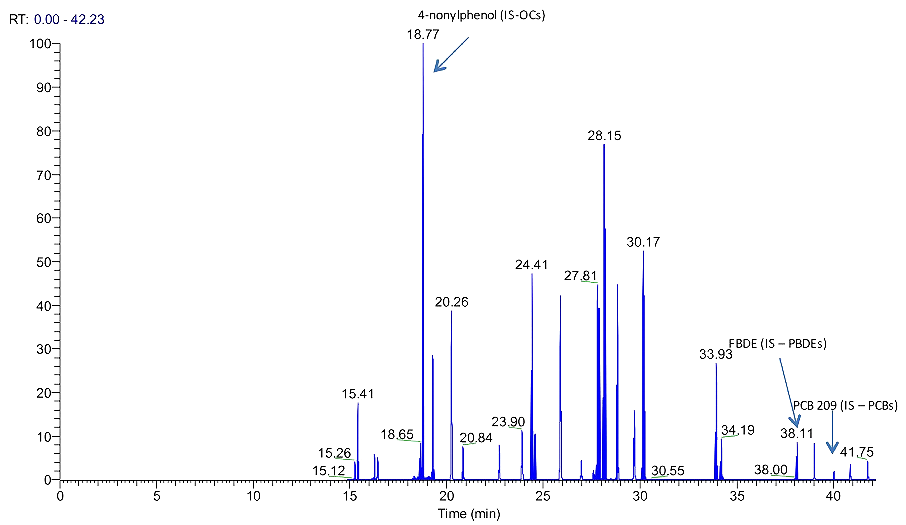
Gas Chromatography Mass Spectroscopy (GCMS)
GCMS is performed to generate a quantitative representation of the chemicals present in a sample. It can be...
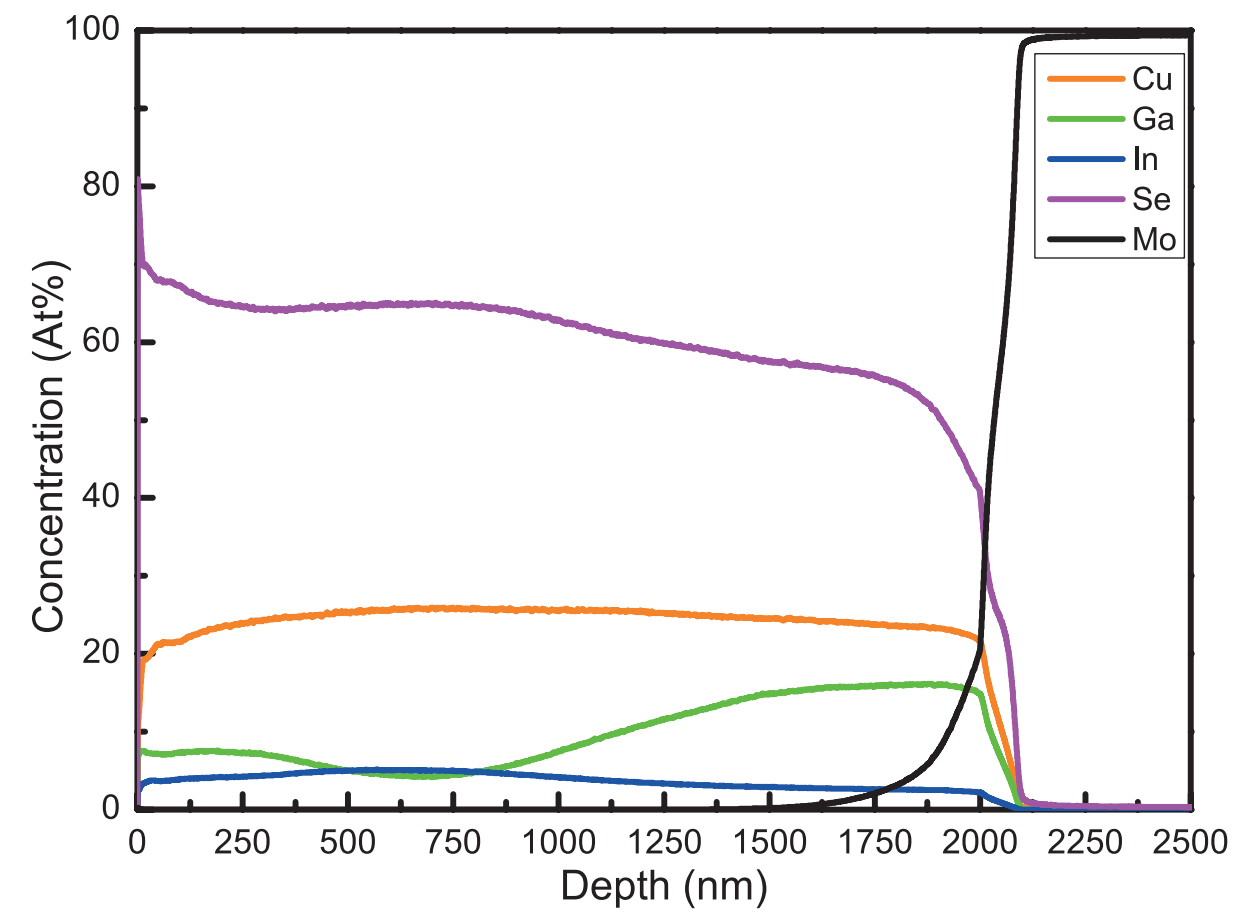
Glow Discharge Optical Emission Spectroscopy (GDOES)
Glow discharge optical emission spectroscopy (GDOES) is a quantitative, chemical analytical technique used to study the elemental composition...

